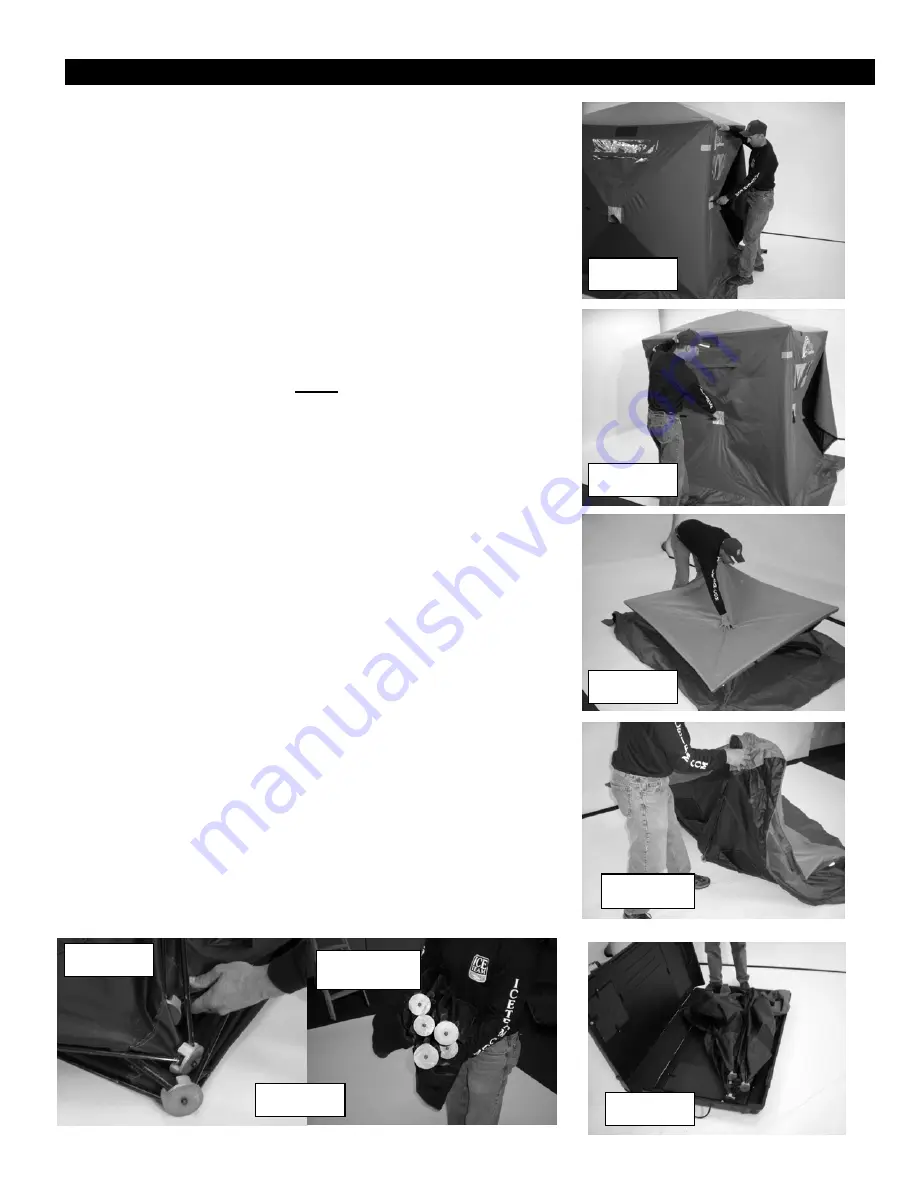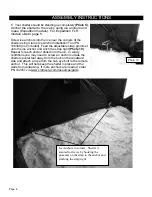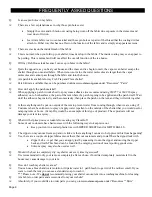
TAKE-DOWN INSTRUCTIONS
1. Close all windows. Leave one or both doors open to allow
air to escape.
2. Remove all ropes and ice anchors and store them in the
provided pouch or in the carry bag side pocket. In windy
conditions, remove ice anchors after collapsing the roof and
walls.
3. Step on the skirt of the short (5 foot) side. Push the center
hub until the wall collapses inward
(Photo 14)
.
Continue either
clockwise or counter-clockwise pushing each wall inward until
all the walls are collapsed
(Photo 15)
. The shelter will fall to
the ice on its own.
4. Push the hub of the roof down until it collapses
(Photo
16)
.
NOTE: Make sure the roof collapses all the way. You may
have to pull up on the edge of the roof to get the roof hub to
collapse.
TAKE-DOWN
INSTRUCTIONS
5. Unclip the shelter from the base on FLR models. Fold up
the shelter
(Photo 17)
.
6. When folding the Expedition up for storage, inspect the hub
systems and poles for entanglement.
NOTE: The Expedition hub systems may tangle when
taking it down. It is extremely important to untangle the
hub systems and poles before completely folding the tent
up for storage (Photo 18).
7. Once the hub systems and poles are free and the tent is
completely folded, store in carry bag. Place the folded shelter
and the ice anchor/rope pouch into the carrying case with the
hubs toward the bottom end of the bag.
8. For Expedition FLR models, simply place the folded
shelter and the ice anchor/rope pouch inside of the base and
close the base
(Photo 19)
.
Make sure your ice shelter is completely dried out after
each use and before storing. Store your ice shelter in a
cool, dry place. Keep away from rodents.
Page 7
Photo 14
Photo 15
Photo 16
Photo 17
Photo 18
Photo 19
Tangled
Untangled
Summary of Contents for 108396
Page 10: ...10 FREQUENTLY ASKED QUESTIONS...




























